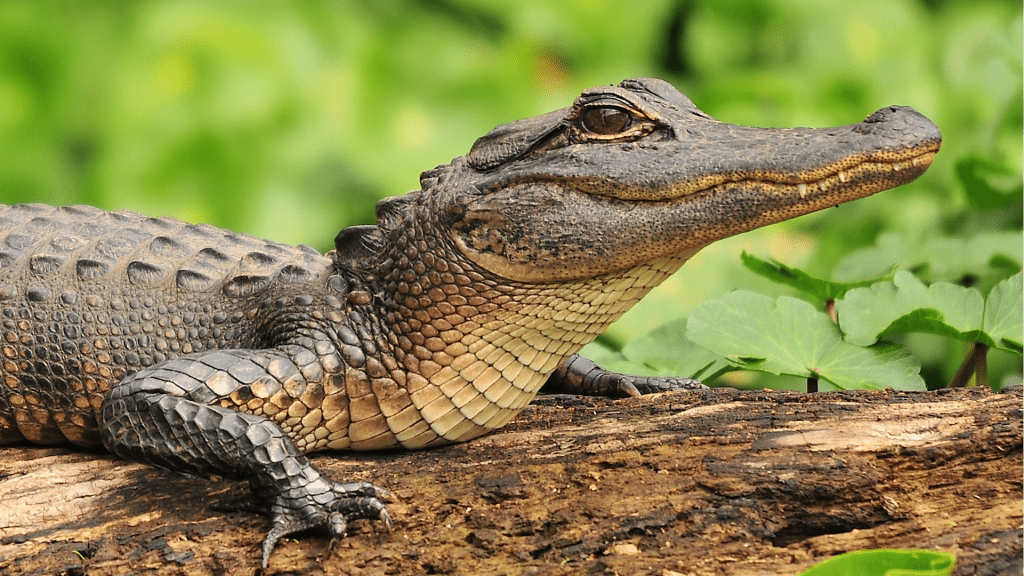Alligators, like many reptiles are ‘plantigrade’. This means that they walk in a flat-footed manner. On land, they can run and move very fast, but only in short bursts.
Alligators are sometimes confused with Crocodiles as they are similar in shape, features and behaviour.
- Alligators have a ‘U’ shaped, shorter snout. Their upper jaw is wider than the lower jaw, overlapping it.
- Their lower teeth are mostly hidden when their mouth is closed and fit into sockets in the upper jaw.
- Their salt glands are non-functional and their sensory pits are located only near their jaws.
- Crocodiles have a ‘V’ shaped, longer snout. Their upper jaw is about the same size as lower jaw and their lower teeth are displayed outside the upper jaw when the mouth is closed (especially noticeable is the huge fourth tooth).
- Their upper teeth display outside the lower jaw. Their salt glands are located on their tongues and excrete excess salt. Their sensory pits are located over most of its entire body.


Large male Alligators are solitary, territorial reptiles. Smaller Alligators can often be found in large numbers in close proximity to each other. The largest of the species (both males and females), will defend prime territory whereas smaller Alligators have a higher tolerance of other Alligators within a similar size class.
Alligators are nocturnal and feed primarily at night. Younger alligators eat insects, shrimps, snails, small fish, tadpoles and frogs. Adult alligators eat fish, birds, turtles, other reptiles and mammals. Alligators swallow their prey whole. Their conical teeth are used for catching the prey, not tearing it apart. Alligators have about 80 teeth and when an alligator loses a tooth, it regrows.
Alligators do not sit on their eggs, which are laid in nests, because it would crush them. The rotting vegetation in the nest warms the eggs. The temperature of the nest determines the sex of the hatchlings. If the eggs are incubated over 93 degrees Fahrenheit (34 degrees Celsius), the embryo develops as a male; temperatures below 86 degrees Fahrenheit (30 degrees Celsius) result in female embryos.

Between these temperatures, both sexes are produced. The natural sex ratio at hatching is five females to one male. The eggs hatch in two months, producing hatchlings about 6 inches long (15 centimetres). The female defends the nest from predators. A group of babies is called a ‘pod’. The female alligator will provide protection for the young for about a year if they remain in the area. Alligators are among the most nurturing of the reptiles.














